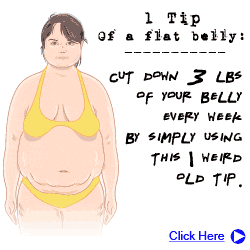Got milk? Yes! Confusingly many different kinds, in fact, from organic to omega-3-fortified.
Though we’re drinking less milk than 30 years ago — women down about 19 gallons per year, mostly in cereal — it’s still an ideal way to get your calcium: One glass packs a quarter of the daily 1,000-milligram requirement (you should get 1,200 if you’re 51 or older).

Federal dietary guidelines suggest sticking to skim and low-fat milk to keep saturated fat levels down. OK, but how do you choose from there? We got the scoop on the new cartons in the dairy case.
Organic Milk

How to choose Milk
Must-know info: This milk comes from cows raised organically, meaning they eat feed grown without chemical fertilizers and pesticides. Some experts advocate for organic milk because they believe that the synthetic growth hormone given to many conventionally raised cattle can cause health problems, from early puberty to cancer.
Still, a study in the Journal of the American Dietetic Association found no significant difference in the level of hormones in organic and conventional milk.
“I don’t think there’s enough conclusive evidence that shows organic milk is healthier or safer than conventional, and both are packed with key nutrients,” says Elisa Zied, author of “Nutrition at Your Fingertips.”
Should you buy it? Sure, if eating (and drinking!) an organic diet is important to you. The jury’s out on its nutritional perks, though. True — research has shown that organic milk can be higher than the regular kind in omega-3 fatty acids, beta-carotene, vitamin E, and conjugated linoleic acid (a type of fat that may help lower cholesterol levels and boost bone formation).
But whether that’s true of the white stuff in your glass depends on such factors as where the cows who provided that milk were grazing. Plus, skim and low-fat milks are low in all kinds of fats — including heart-healthy omega-3s.
Ultra-pasteurized Milk
Must-know info: Designed to keep dairy products fresh for longer, ultra-pasteurized milk is heated to a higher temperature than regular, pasteurized milk (280 degrees Fahrenheit versus the usual 161), says Cary P. Frye, vice president of regulatory and scientific affairs for the International Dairy Foods Association. That means your milk can safely stay unopened in the fridge for up to 60 days (instead of 21).
Organic milk is often ultra-pasteurized, since it typically travels greater distances to stores; some non-organic brands also choose to pasteurize milk this way.
When it’s packaged in specially sterilized containers, then sealed to block light and air, you get shelf-stable milk (like Parmalat, or Borden’s shelf-stable line); it can sit unopened in your pantry for up to a year. Once opened, both kinds should be refrigerated and used within 7 to 12 days — a day or two longer than pasteurized milk.
Should you buy it? Milk that’s ultra-pasteurized isn’t any safer or more nutritious, but it could be a good pick if you’re slow to start a carton or like to buy in bulk. The shelf-stable kind is an excellent pantry staple (though some find it has a slightly burnt taste).
Fortified Milk
Must-know info: These “value-added” milks pack extra nutrients beyond the usual vitamins A and D, such as vitamin C, omega-3s, and fiber. Skim “plus” or “deluxe” milk contains milk powder, which adds calcium and protein (and more calories per glass), as well as whiteners or stabilizers to make it look and taste more like whole.
Should you buy it? Though it’s better to get nutrients from the source (say, fish for omega-3s), these milks can help fill the void. Fortified skim milk is a smart pick if you don’t like low-fat milk but want to avoid the fat and calories in whole.
Lactose-free Milk
Must-know info: Lactose-free milk is a godsend for those who can’t digest the sugar (lactose) in dairy. As many as 6% of Americans have some degree of lactose intolerance, meaning they may feel gassy, crampy, or nauseated, or have diarrhea, if they eat or drink dairy products.
Should you buy it? If you’re lactose-intolerant, this milk can help you get the calcium and vitamin D you need without gastric distress.
Alterna milks made simple
Rice, soy, and other nondairy milk is more common than ever, giving vegans, the lactose intolerant, and those with no special dietary needs an alternate pour for their cereal.
If you’re swapping one in for regular milk, make sure it’s fortified with calcium and vitamin D (unless it’s soy milk, which has the same amount of both nutrients as cow’s milk).
If you’re vegan, look for B12, too. Shoot for milks that say “unsweetened” — even plain varieties may contain extra sugar. Here, serving suggestions from Dreena Burton, author of “Let Them Eat Vegan”:
• Soy milk is a bit higher in healthy unsaturated fats than other nondairy milks, so it has a richer flavor ideal for creamy, savory sauces.
• Rice milk has a natural sweetness perfect for baked goods. (Tip: Use flavored rice milk and reduce the recipe’s sugar.)
• Coconut milk boasts a clean, fresh flavor that perks up plain old oatmeal, and it contains a special type of saturated fat that, studies suggest, raises your “good” (HDL) cholesterol, but not the “bad” (LDL) kind.
• Almond milk gives smoothies a nutty taste. One serving has half your daily requirement of vitamin E.
• Oat milk adds a light, milky creaminess (and filling, heart-healthy soluble fiber) to mashed potatoes.
Related Blogs
- Related Blogs on 3 Fatty Acids
- Related Blogs on American Dietetic Association





